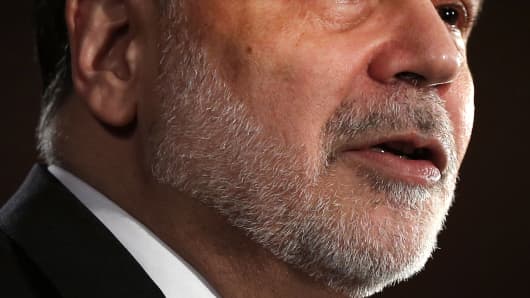(Read More: Economists Ask: Did Ben Bernanke Tip Fed's Hand?)
An often-times better gauge of the employment picture is the weekly jobless claims report, which gets released each Thursday at 8:30 a.m.
The claims number represents a truer tally than the nonfarm payroll report because it involves an actual count from the 50 states. Though the number is subject to seasonal adjustments and revisions as well as the occasional distortion because of states that failed to report, economists often find it more useful.
Conversely, the monthly unemployment rate is a far more fickle creature.
For instance, the June reading for May payrolls came in at 7.6 percent, up one-tenth from the previous month even though the household survey showed 175,000 net new jobs.
(Read More: Here's Who Wins and Who Loses From Fed Taper Talk)
In previous months, the rate had been on a slow, steady decline, but even that was driven in large part by a 35-year low in the labor force participation rate. The headline unemployment rate number only counts those out of work who are actively looking for jobs.
With all of that noise in the nonfarm payrolls number, the Fed's Open Market Committee and Chairman Ben Bernanke will look at the claims number for a better handle on the jobs market.
History, in fact, suggests that when the claims number averages below 350,000, you can safely bet a Fed interest rate hike will come within the year, according to research from Joe LaVorgna, chief U.S. economist at Deutsche Bank.
The current rate is straddling that number, with claims averaging 346,000 per week in the second quarter.
(Read More: Here's the Real Reason the Fed Will Taper QE)
"While a higher fed funds rate is still a long way off based on the FOMC's latest forecasts, the recent claims readings, if sustained, strongly suggest the Fed's first hike in interest rates could come as early as next summer—we are forecasting early 2015," LaVorgna said.
In the past, a 350,000 claims average corresponded to a 6.2 percent unemployment rate, LaVorgna said, further exemplifying possible distortions in the current number.
In the current Fed forecasts, rate hikes wouldn't come until mid-2015, when it expects a rate of 5.8 percent to 6.2 percent.
But rate hikes came when claims averaged 350,000 in 1958, 331,000 in 1961, 345,000 in 1984 and 344,000 in 1987.
"If past is prologue, whereby low and declining claims accurately foreshadow a noticeable pickup in hiring—and hence a sharp decline in the unemployment rate—then monetary policymakers will not be waiting until 2015 before raising the fed funds rate," LaVorgna said.





